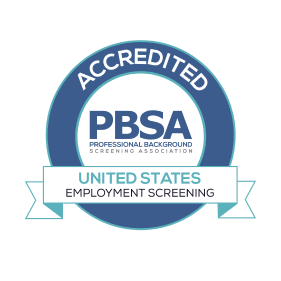How to Navigate Multi-State Background Check Compliance
Conducting a multi-state background check is far from routine.
Each state enforces its rules and restrictions around background screening, creating a legal patchwork that’s nearly impossible to navigate without a focused, compliant strategy.
From disclosure requirements to restrictions on certain types of criminal history and drug testing protocols, the variability between jurisdictions can be staggering. An approach that works flawlessly in Texas might violate fair hiring laws in Illinois. A pre-employment marijuana screen that’s mandatory for healthcare roles in one state could be illegal in another. That’s why understanding the landscape—and tailoring your process accordingly—is not just helpful, it’s essential.
The challenge lies in building a program that balances efficiency with legal precision. A multi-state background check must conform to federal guidelines, like those set by the FCRA and EEOC, and to increasingly unique and specific state and city ordinances. And those regulations can change with little notice.
The Real-World Risk of Getting It Wrong
There’s no shortage of headlines showcasing companies penalized for noncompliance with background check regulations. Employers have faced multi-million-dollar class action lawsuits for procedural violations, many stemming from inconsistencies in how screening is conducted across state lines.
The legal risk, however, isn’t the only concern. Delayed hiring timelines, higher candidate drop-off rates, and inconsistent candidate experiences erode organizational credibility. A recruiter confident in one region may unintentionally violate disclosure laws in another, simply by reusing a standard process that fails to account for local requirements.
Add the pressure to move fast in competitive talent markets, and the risk compounds. Legal pitfalls are rarely the result of negligence. They often stem from outdated or inflexible systems that can’t keep pace with the law.
Building a Multi-State Background Check Program That Withstands Scrutiny
To mitigate these risks, organizations must build a multi-state background check program that is both consistent and adaptable. The key is not to seek uniformity but to create a framework that allows for jurisdiction-specific modifications while maintaining centralized oversight.
At the heart of a strong program is your screening provider. Not all vendors are equipped to support 50-state compliance at scale, and fewer still are able to respond with the agility required when laws shift. A PBSA-accredited partner with extensive experience in multi-jurisdictional compliance, like S2Verify, brings essential value in this regard. These providers not only understand the letter of the law but also help you operationalize compliance without slowing your hiring process.
Customization is also critical. Multi-state screening should not be an “off-the-shelf” workflow. You need technology and processes that adapt to each job’s location. Disclosures, adverse action notices, and consent forms should all be configured by state. And as new cities and counties adopt their own rules, your workflows must evolve accordingly.
Automation can further reduce risk. Modern screening platforms streamline compliance tasks such as generating location-specific notices, tracking turnaround times, and flagging discrepancies in reporting windows. But software alone isn’t enough. Your team must also understand the rules behind the tech and be trained to recognize when jurisdictional factors call for extra attention.
What to Prioritize in Your Compliance Framework
Even with the right tools and partners in place, maintaining a compliant multi-state background check process requires a continuous commitment to proactive oversight.
You’ll want to focus on a few key elements to create a sustainable structure:
- Use state-specific disclosures and adverse action procedures tailored to each jurisdiction’s legal requirements.
- Maintain clear records of all candidate communications, screening decisions, and dispute outcomes in case of an audit.
- Ensure integration with your applicant tracking system supports dynamic workflows that trigger the right steps based on job location.
- Keep a close eye on legislation, especially around marijuana screening, ban-the-box rules, and credit reporting restrictions.
- Educate internal stakeholders regularly, especially recruiters and hiring managers, about changes that may affect their communication with candidates.
Focusing on these components creates a compliance-forward culture that minimizes legal risk without bogging down your hiring velocity.
Why Compliance Drives Candidate Confidence
Beyond legal considerations, a well-managed background screening process communicates a lot to candidates, especially in competitive job markets. Transparency, fairness, and timely communication reflect directly on your employer brand. If candidates sense inconsistency or confusion, they may walk away, especially when better offers are only a click away.
A compliant multi-state background check strategy ensures candidates are treated equitably regardless of where they apply. That consistency reduces legal exposure and reinforces your organization’s reputation as a trustworthy and professional employer.
Where Compliance Meets Confidence
Managing background checks across state lines will only grow more complex in the years ahead. But complexity doesn’t have to mean confusion. With the right strategy, structure, and support, you can confidently operate a compliant, scalable screening program that adapts with every new law and every new hire.
S2Verify helps HR teams across industries streamline their processes and reduce their legal exposure, without sacrificing speed or candidate experience. If your team is ready to simplify your multi-state background check process, we’re ready to help you lead with confidence.







